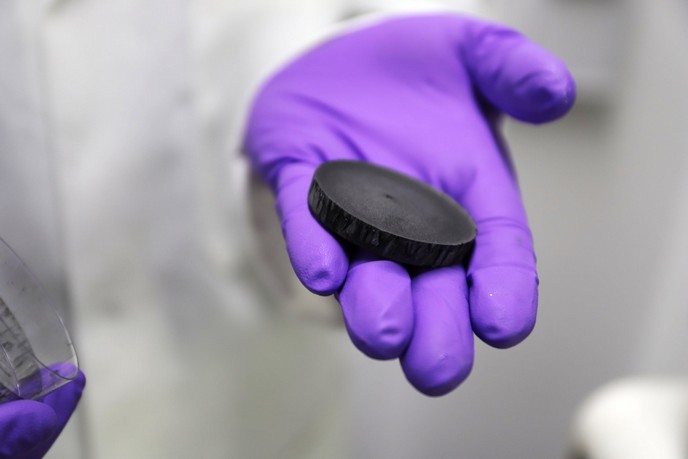Europe’s investment in graphene
Graphene is a familiar material: the ‘lead’ in pencils is actually graphite, which comprises many layers of graphene stacked on top of each other. Following the isolation of a single atomic layer for the first time in 2004 by Andre Geim and Konstantin Novoselov at the University of Manchester, scientists have discovered that individual graphene layers possess exceptional properties. These properties include the highest thermal conductivity of any known material, plus very high strength and electrical conductivity. Furthermore, graphene is impermeable, transparent and flexible, and combinations of these properties can be applied to many different areas. The goal of the EU-funded Graphene Flagship(opens in new window) is to bring graphene and related materials (GRMs) out of the laboratory into society in the form of exciting and versatile new products. The Flagship aims to The goal was contributingcontribute to Europe’s economic growth through the creation of new employment opportunities. Significant investment This is the EU’s largest research initiative; with a duration of 10 years and a budget of EUR 1 billion, it represents a new form of joint coordinated research at an unprecedented scale. It is funded jointly by the European Commission, Member States and Associated Countries, with over 150 research groups across 23 countries involving academia, research institutes and industry. “Research efforts cover the entire value chain from materials production to component technologies, and system integration ranging from electronics or optoelectronics to composite materials, batteries and coatings,” notes Prof. Jari Kinaret, Director of the Graphene Flagship. In the current phase of the Flagship programme (known as Core2) running between 2018 and 2020, six spearhead projects are being conducted. These projects focus on a wide range of application areas, but all aim to develop new or improved products with GRMs. The move towards a higher technology readiness level is evident after partner organisations launched six spin-off companies based on their work, securing more than EUR 20 million in risk capital funds. “It is quite difficult to choose the highlights among individual results,” says Prof. Kinaret. “But I would mention extremely rapid communication systems such as very fast photodetectors and a photonic switch for 5G communication systems.” Additional examples include a combination of different upscalable technologies for producing graphene flakes through electrochemistry or shear exfoliation, both of which have already been commercialised. Major benefits The initiative also promotes sustainability, with researchers working on several technologies related to renewable energy. “For example, we are developing a solar farm in Crete, and energy storage technologies that are crucial for electromobility,” explains Prof. Kinaret. “More generally, many of the technologies we are working on reduce energy consumption by enabling lighter cars and airplanes to be produced. Furthermore, we are developing a wide range of sensors for environmental and medical applications.” Graphene’s unique thermal and strength properties make it ideal for improving the performance of aerospace and satellite applications. When combined with composites or plastics, graphene performs exceptionally well in terms of overall strength, material strength and thermal conductivity. Graphene is also useful in novel diagnosis and treatment applications such as drug delivery and biosensors. Europe is now a major player in graphene revolution. “By taking graphene from the realm of academic laboratories and into society, Graphene Flagship aims to generate economic growth, new jobs and new opportunities for Europeans as both investors and employees,” concludes Prof. Kinaret.
Countries
Sweden



